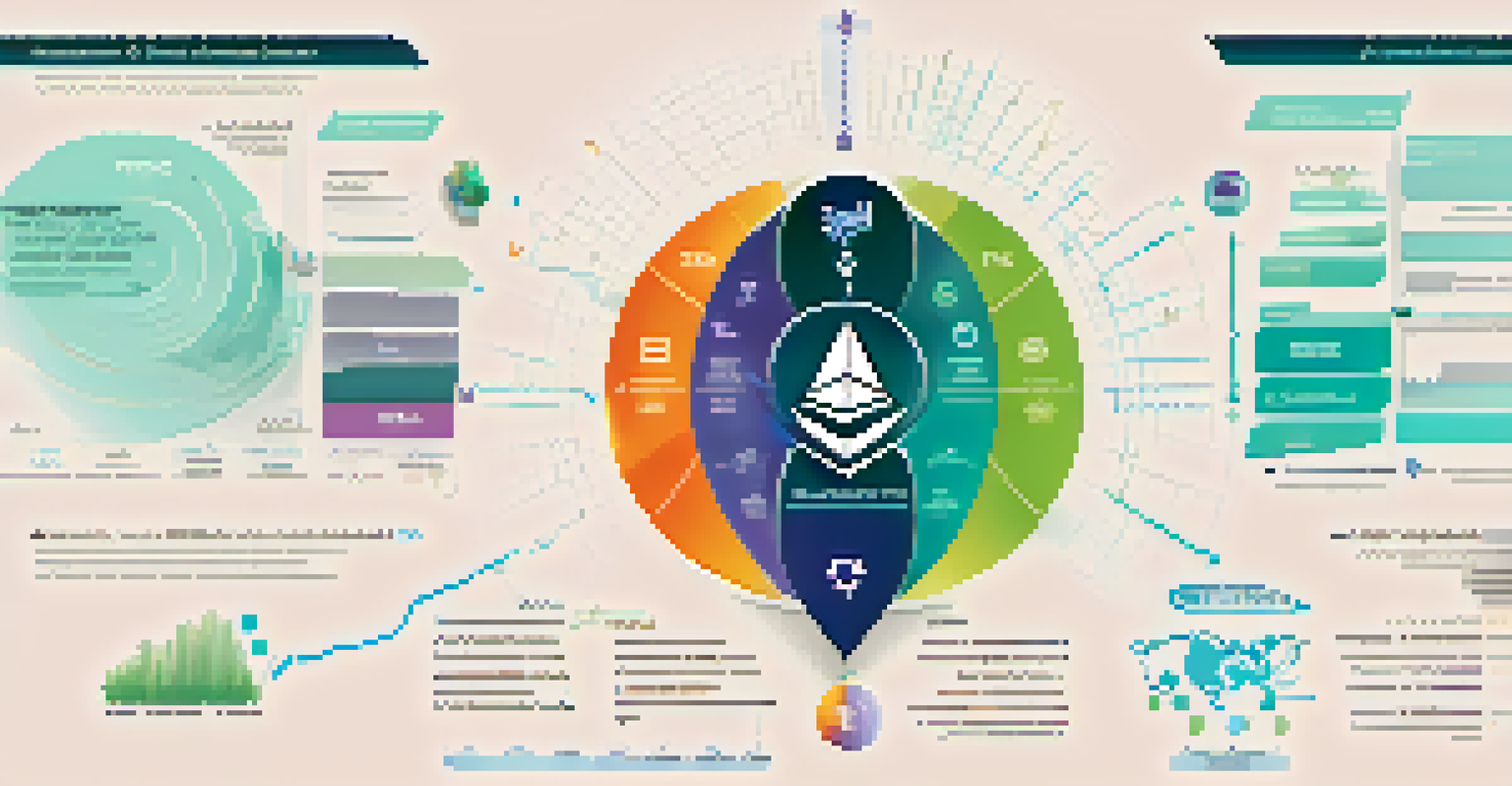Strategies for Enhancing Transparency in Ethereum Governance

Understanding Ethereum Governance and Its Importance
Ethereum governance refers to the processes and mechanisms by which decisions are made regarding the development and management of the Ethereum network. This is crucial because it affects everything from protocol upgrades to community engagement. An effective governance structure helps ensure that all stakeholders, including developers and users, are heard and considered.
A community is like a ship; everyone ought to be prepared to take the helm.
Transparency in governance is vital for fostering trust among participants in the Ethereum ecosystem. When stakeholders are kept in the loop, they feel more confident in the decisions being made. This trust can lead to increased participation and a more robust community, ultimately benefiting the entire network.
By understanding the nuances of Ethereum governance, we can identify areas where transparency can be improved. This awareness is the first step toward implementing strategies that not only enhance clarity but also encourage a more inclusive and participatory approach to decision-making.
Leveraging Decentralized Autonomous Organizations (DAOs)
Decentralized Autonomous Organizations (DAOs) are an innovative way to enhance transparency in governance by allowing users to participate in decision-making. DAOs operate on smart contracts, which automate and enforce rules without relying on a central authority. This structure empowers community members to vote on proposals, providing a clear record of decisions made and the rationale behind them.

By utilizing DAOs, Ethereum can create a more democratic governance model where all voices are heard. This helps reduce the chances of centralization, as power is distributed among participants rather than concentrated in a few hands. In turn, this increases accountability, as members can trace decisions back to the community's collective will.
Importance of Transparent Governance
Transparent governance in Ethereum fosters trust and encourages active community participation.
Implementing DAOs in Ethereum governance also encourages active involvement from the community. When users know that their votes matter and that they can influence outcomes, they are more likely to engage with the platform. This heightened engagement can lead to richer discussions and more thoughtful proposals, ultimately enhancing the quality of governance.
Implementing Clear Communication Channels
Clear communication is essential for transparency in Ethereum governance. Establishing dedicated channels for updates, discussions, and feedback can help keep the community informed and engaged. Whether it's through forums, social media, or newsletters, these channels serve as a lifeline for sharing information and gathering opinions.
The strength of the team is each individual member. The strength of each member is the team.
One effective approach is to create regular updates that summarize governance decisions, ongoing discussions, and upcoming proposals. This ensures that even casual users can stay informed without needing to dive deep into technical details. Additionally, engaging formats, such as infographics or video summaries, can make complex information more digestible.
Moreover, fostering an open dialogue where community members can voice their opinions and ask questions is vital. This not only enhances transparency but also creates a sense of belonging among users. When people feel that their input is valued, they are more likely to participate actively in governance.
Encouraging Community Participation and Feedback
Encouraging community participation is at the heart of transparent governance. When users feel empowered to contribute their thoughts and ideas, the governance process becomes more inclusive. This can be achieved through various initiatives, such as hosting community meetings or online surveys to gather feedback on proposed changes.
Incorporating user feedback into governance decisions is crucial for building a transparent system. By showing that community input is valued and acted upon, Ethereum can strengthen its relationship with users. This not only enhances trust but also leads to better decision-making, as diverse perspectives are considered.
Role of DAOs in Decision-Making
Decentralized Autonomous Organizations (DAOs) empower users by allowing them to vote on proposals, enhancing accountability.
Creating incentives for participation, such as rewards for valuable contributions, can further boost engagement. When users see that their efforts can lead to tangible benefits, they are more likely to get involved. This cycle of engagement and feedback ultimately supports a healthier governance ecosystem.
Utilizing Advanced Analytics for Decision Transparency
Advanced analytics tools can play a significant role in enhancing transparency in Ethereum governance. By analyzing data from community interactions, proposals, and voting patterns, stakeholders can gain insights into how decisions are made. This data-driven approach can help demystify the governance process, making it clearer for everyone involved.
For instance, visualizing voting results and proposal outcomes can provide an immediate understanding of community sentiment. Dashboards that display real-time data on governance activities can also keep users informed and engaged. When community members can easily access this information, they are more likely to feel included in the decision-making process.
Moreover, leveraging analytics can help identify trends and areas for improvement in governance practices. This continuous feedback loop allows for adjustments to be made, ensuring that the governance model evolves alongside the community's needs. Ultimately, using analytics fosters a culture of transparency and adaptability.
Establishing Clear Documentation and Resources
Clear documentation is a cornerstone of transparency in Ethereum governance. Providing accessible resources that outline governance processes, roles, and responsibilities ensures that all stakeholders understand how decisions are made. This clarity can help demystify the governance framework and reduce confusion among users.
Creating a centralized repository for governance-related documents, such as proposals and meeting notes, allows users to easily access information. Well-structured guides and FAQs can also assist newcomers in navigating the governance landscape. By making resources easy to find and comprehend, Ethereum can foster a more informed community.
Clear Communication is Key
Establishing clear communication channels helps keep the Ethereum community informed and engaged in governance processes.
Additionally, regular updates to documentation are essential to reflect any changes in governance processes. This commitment to keeping resources current shows the community that transparency is a priority. When users see that the governance framework is well-documented and maintained, they are more likely to trust the system.
Fostering a Culture of Openness and Accountability
Creating a culture of openness and accountability is essential for enhancing transparency in Ethereum governance. This involves not only sharing information but also encouraging honesty in discussions and decision-making processes. When stakeholders know they can speak freely without fear of retribution, it fosters a more collaborative environment.
Accountability mechanisms, such as regular audits and public reporting of governance activities, further reinforce this culture. By holding decision-makers responsible for their actions, stakeholders can ensure that governance is conducted ethically and transparently. This not only builds trust but also encourages responsible behavior among participants.

Ultimately, fostering such a culture requires commitment from all levels of the community, from developers to users. When everyone values transparency and accountability, the governance process can thrive. This collective effort can lead to a more resilient and engaged Ethereum community.